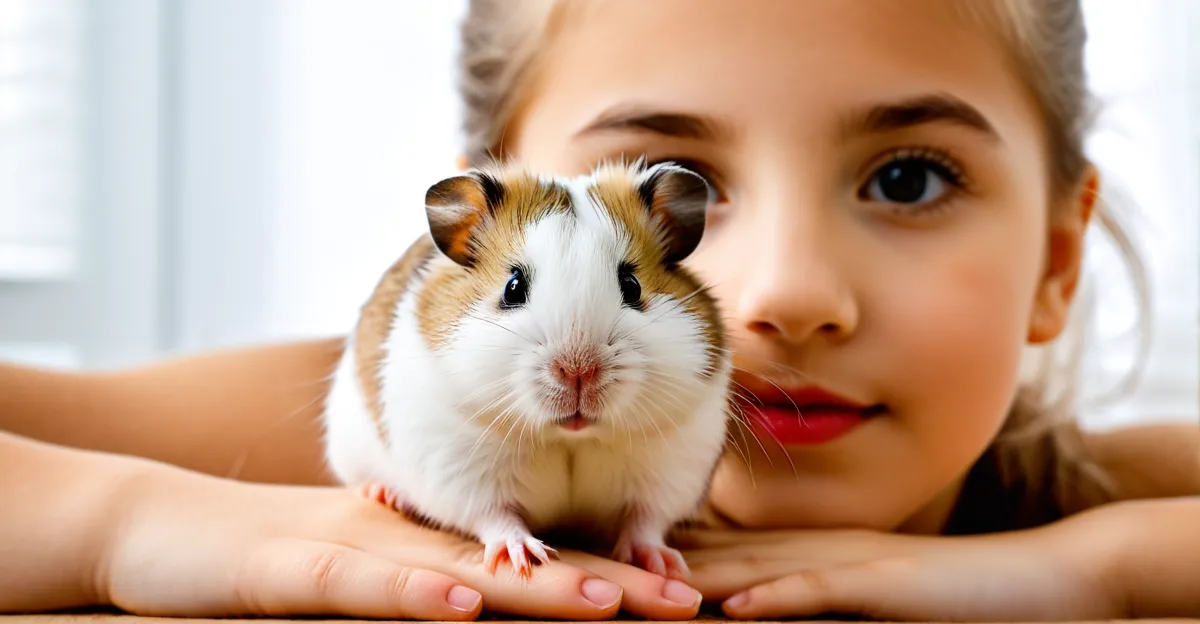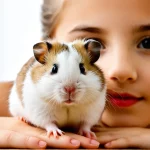Key Benefits of Pet Hamsters for Children
Understanding how hamsters impact young minds
The benefits of pet hamsters for kids extend far beyond simple companionship. One of the most significant advantages is how they encourage responsibility. Caring for a hamster requires daily feeding, cleaning, and attention, which helps children develop routine and accountability early on. This routine becomes a practical way for kids to learn the importance of commitment.
Topic to read : How Do Pets in the UK Adapt to Urban Living Environments?
Additionally, hamsters provide consistent companionship and emotional support. Their gentle and predictable nature offers comfort, especially for children who may struggle with loneliness or anxiety. This constant presence helps nurture a sense of security and belonging.
Furthermore, the advantages of hamster pets encompass important lessons in empathy and respect. Handling and observing these small creatures teaches kids to appreciate living beings’ needs and feelings. The direct interaction fosters sensitivity, vital for child development and pets interaction.
This might interest you : What Makes UK Pets the Perfect Companions?
In sum, the relationship between child development and pets like hamsters promotes both emotional growth and practical life skills. These small pets act as gateways to nurturing care and understanding within a child’s daily life.
Developmental and Educational Value of Hamsters for Kids
Understanding childhood learning with pets involves recognizing how hamsters offer unique lessons in biology and animal behaviour. Caring for a hamster allows children to observe daily routines, understand basic needs such as feeding and hygiene, and appreciate the responsibilities involved. This close interaction fosters a practical knowledge of life sciences in an engaging, hands-on manner.
Beyond biology, hamsters encourage the development of critical life skills. Managing feeding schedules or habitat cleaning enhances problem-solving skills and decision making. When children encounter challenges like health issues or behaviour quirks, they learn to assess situations and make informed choices promptly, building confidence and independence.
Moreover, the act of talking to and about hamsters can stimulate language development and social interaction. Discussing their pet’s habits and needs promotes vocabulary growth and encourages communication within families or peer groups. In this way, hamsters also serve as a catalyst for improved interpersonal skills, combining educational benefits of hamsters with emotional and social learning.
By integrating these aspects, hamsters provide a balanced and enriching learning experience, ideal for nurturing various developmental domains in childhood.
Social and Emotional Advantages of Hamster Ownership
Discovering the impact of a small companion
Owning a pet hamster significantly enhances emotional wellbeing in children by reducing feelings of loneliness. These tiny companions offer consistent comfort through their gentle presence, providing children with a reliable source of affection. This emotional connection is especially valuable during times of stress or change.
The social effects of pet hamsters extend beyond the individual child. Caring for a hamster boosts self-esteem as children learn responsibility and witness the positive outcomes of their efforts. This sense of accomplishment encourages a positive self-image and motivation.
Moreover, hamsters act as therapeutic pets for kids, facilitating interactions within family and peer groups. The shared experience of caring for or talking about a hamster creates natural opportunities for communication and bonding. Children often find it easier to connect with others when discussing their pet’s antics or health, enhancing their social skills and networks.
In summary, hamster ownership provides a multifaceted boost to children’s social and emotional health. The ongoing companionship and daily responsibilities encourage growth, empathy, and social engagement in an accessible and meaningful way.
Health and Lifestyle Benefits for Children with Hamsters
Small pets like hamsters rank high among wellness and pets options for families seeking low-maintenance companions. Their status as a low-allergy pet option makes hamsters especially suitable for households with children prone to allergies or asthma. This accessibility helps parents confidently introduce pets without significant health concerns.
In terms of child activity and hamsters, caring for these small pets encourages gentle, consistent physical engagement. Tasks such as feeding, cage cleaning, and supervised playtime foster responsibility while also promoting light movement. These routines can instill valuable habits in children, including consistency and empathy toward animals.
Hamsters also provide a controlled, safe animal interaction within the home environment. Their size and temperament allow children to build positive social skills through nurturing without the risks sometimes associated with larger pets or outdoor animals. This type of interaction can boost emotional wellness, providing companionship that supports mental health.
Choosing hamsters aligns well with wellness and pets goals, as they balance ease of care with meaningful benefits for children’s health and lifestyle. This makes them excellent choices when parents want pets that enhance family well-being and promote healthy, active habits.
Practical Tips for Families Choosing a Hamster
Thoughtful steps for a happy home
When choosing a pet hamster, families should consider breed characteristics to match their lifestyle. Syrian hamsters are larger and typically solitary, making them ideal for gentle handling and straightforward care. Dwarf breeds, such as Roborovski or Winter White, are smaller and more social but might be better suited for older children due to their quicker movements.
Involving children in hamster care tips for children helps build responsibility. Let them participate in setting up the hamster’s habitat, including arranging bedding, placing food dishes, and adding toys. This hands-on engagement fosters respect and understanding of the hamster’s needs.
For a safe introduction of pets to kids, supervise initial interactions closely. Teach children to handle the hamster calmly, avoiding sudden movements or loud noises that could stress the animal. Establish clear rules such as washing hands before and after handling and not disturbing the hamster during sleeping periods to ensure positive experiences for both pet and child. These practices create a loving environment where the hamster’s well-being and the child’s safety go hand in hand.


